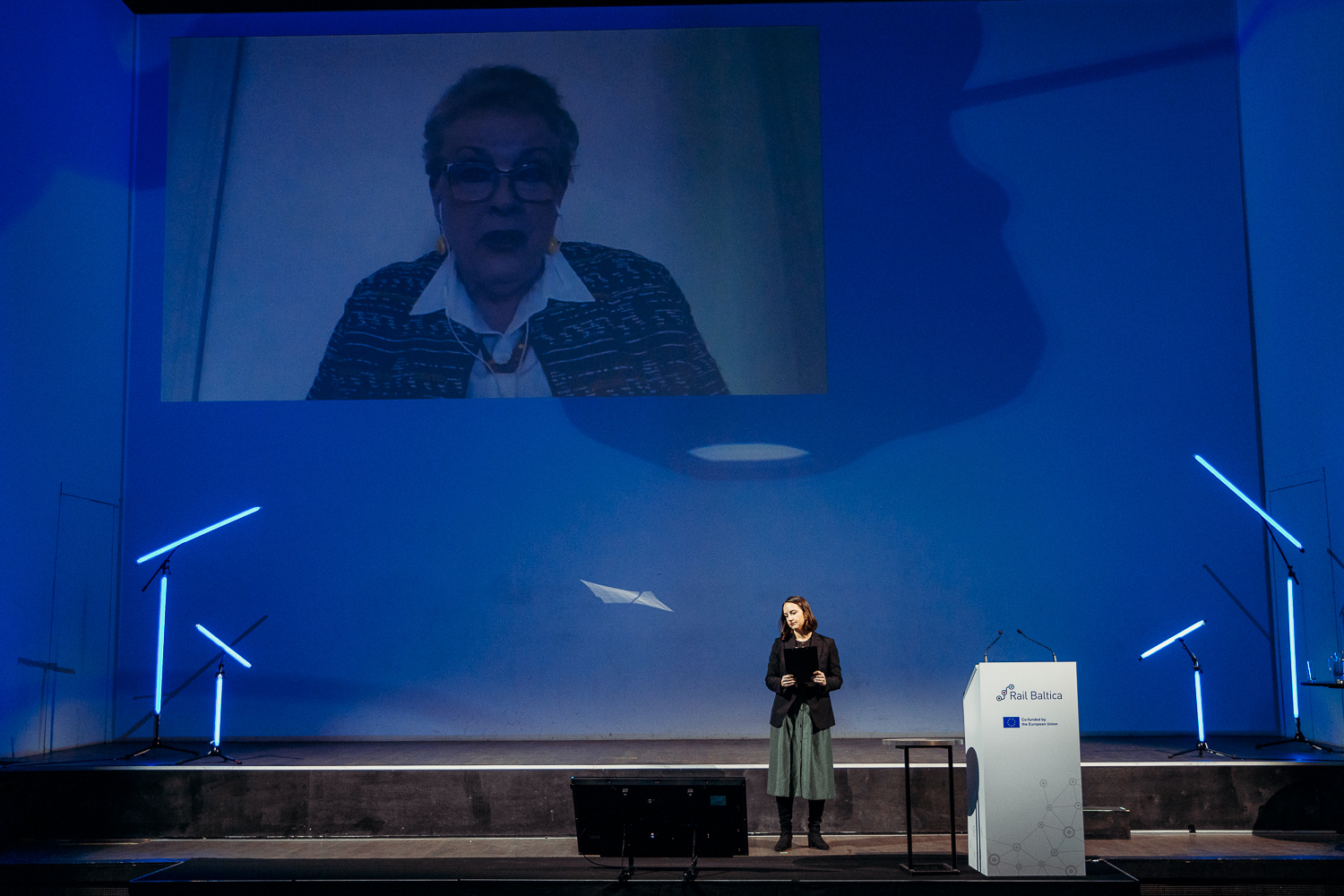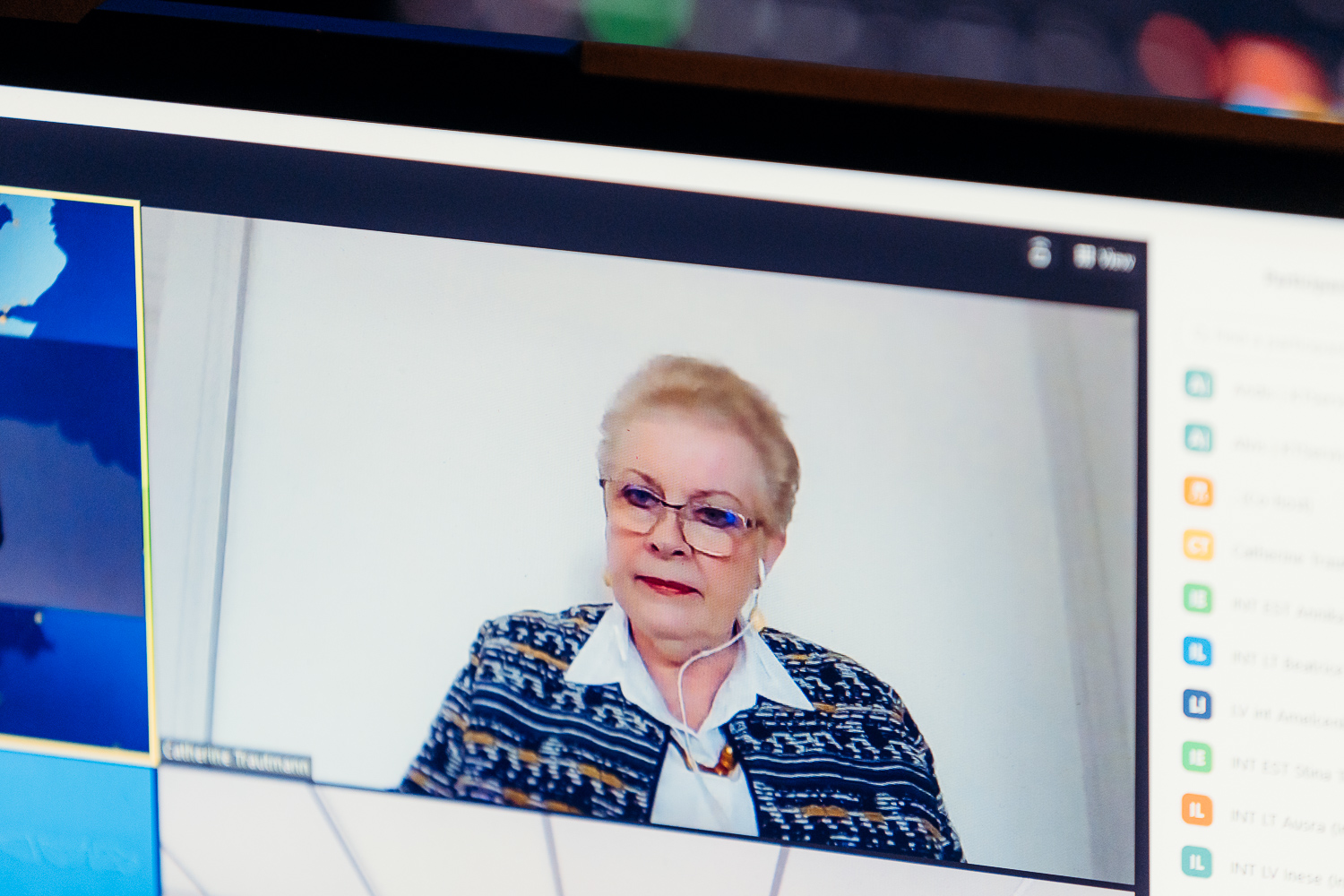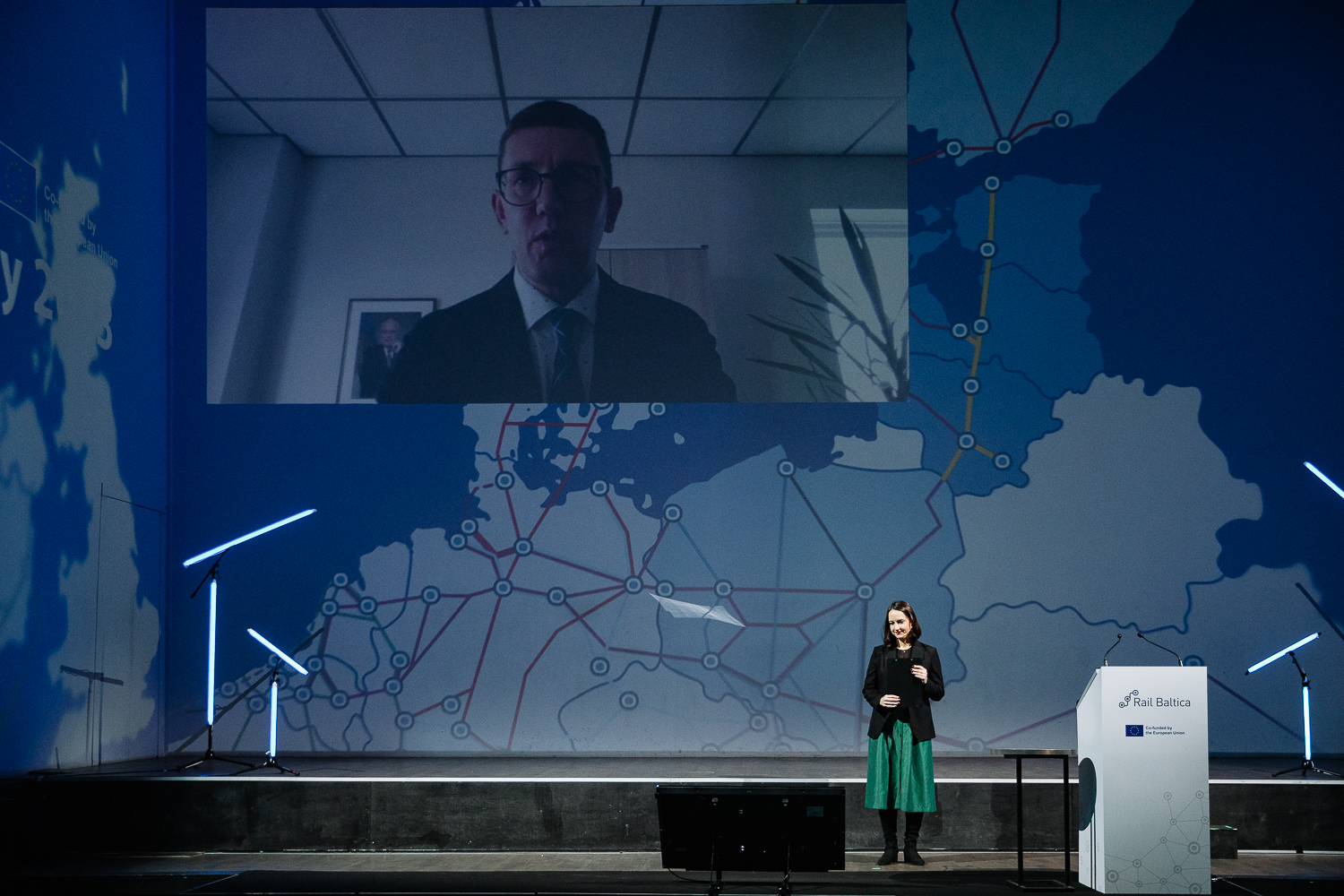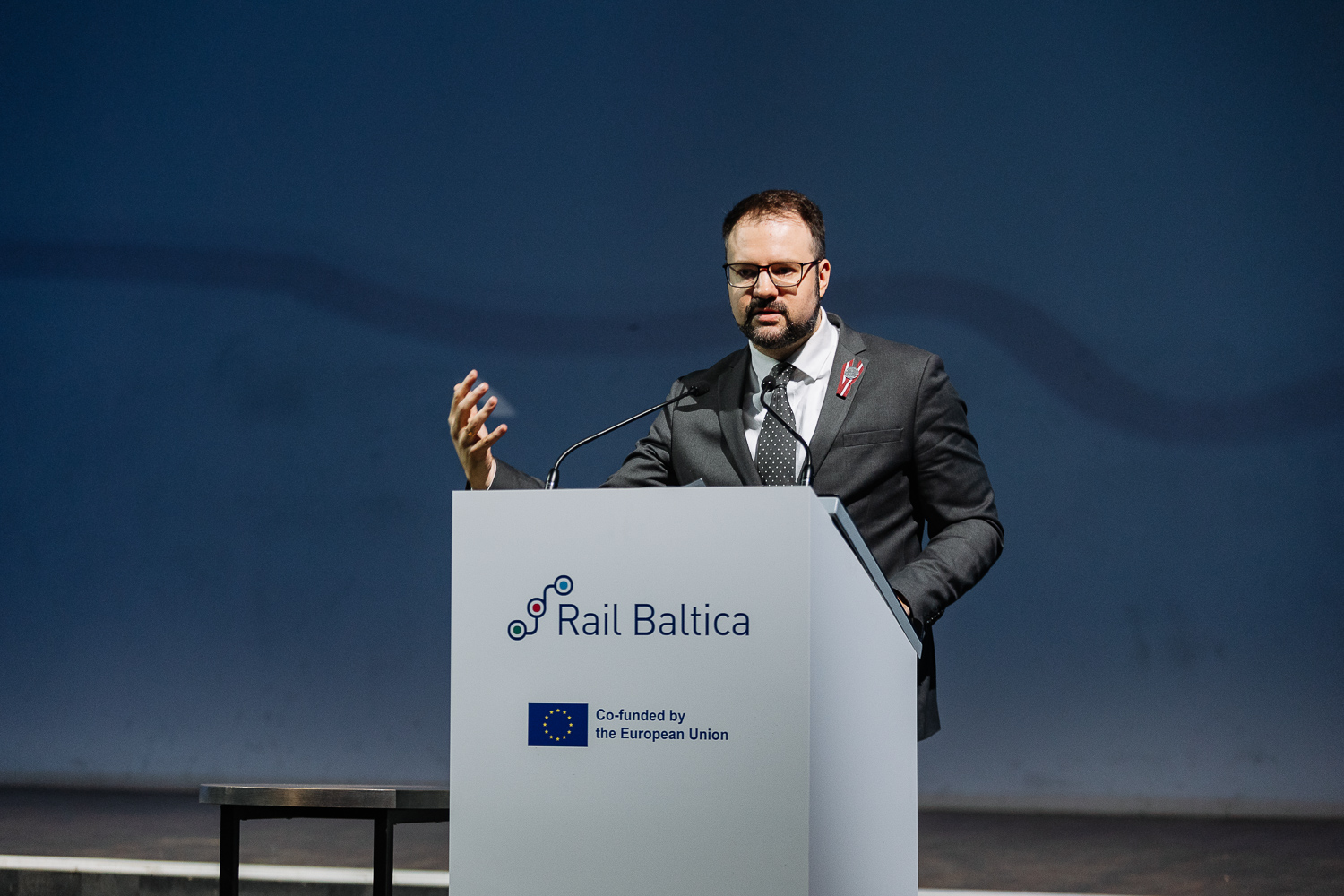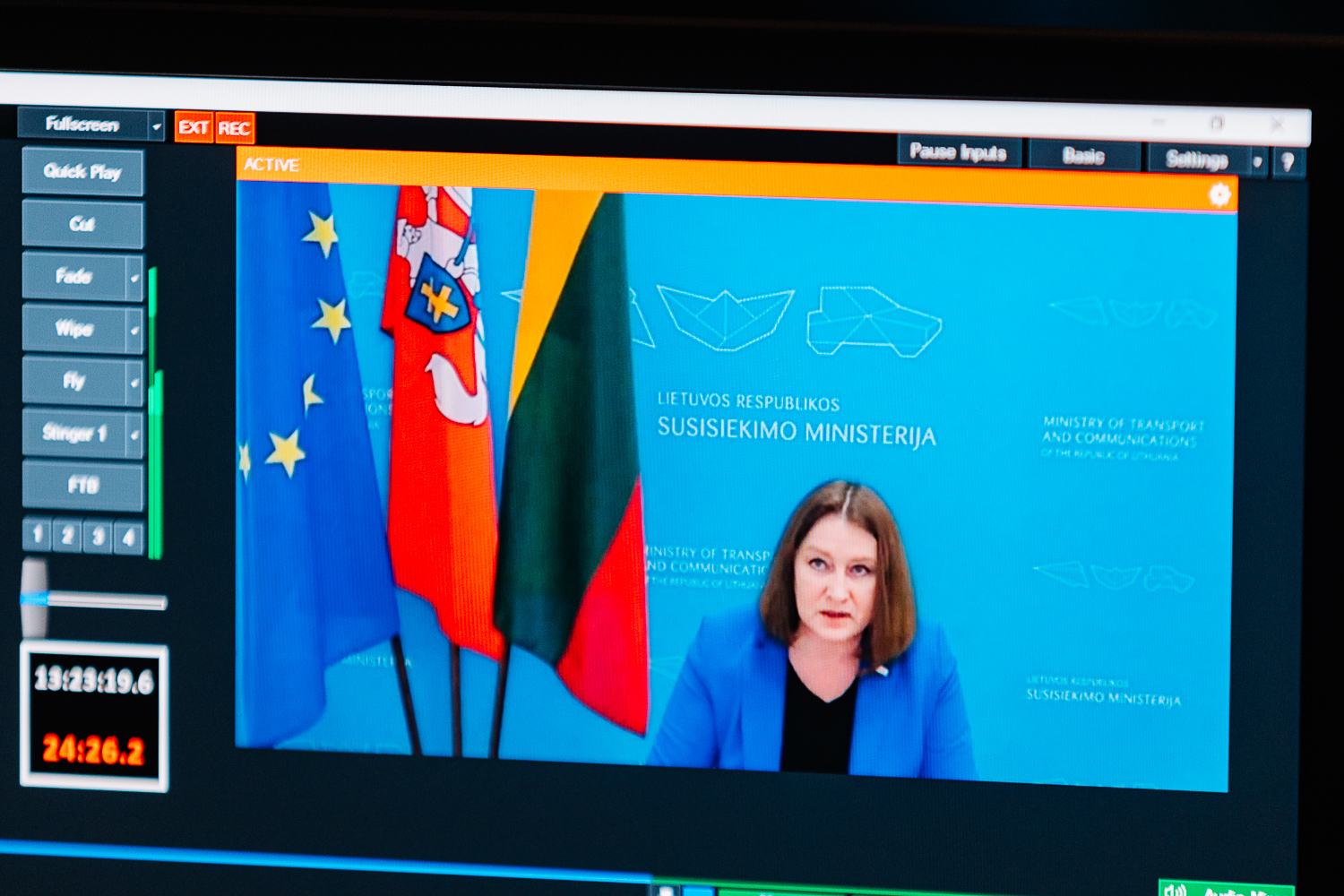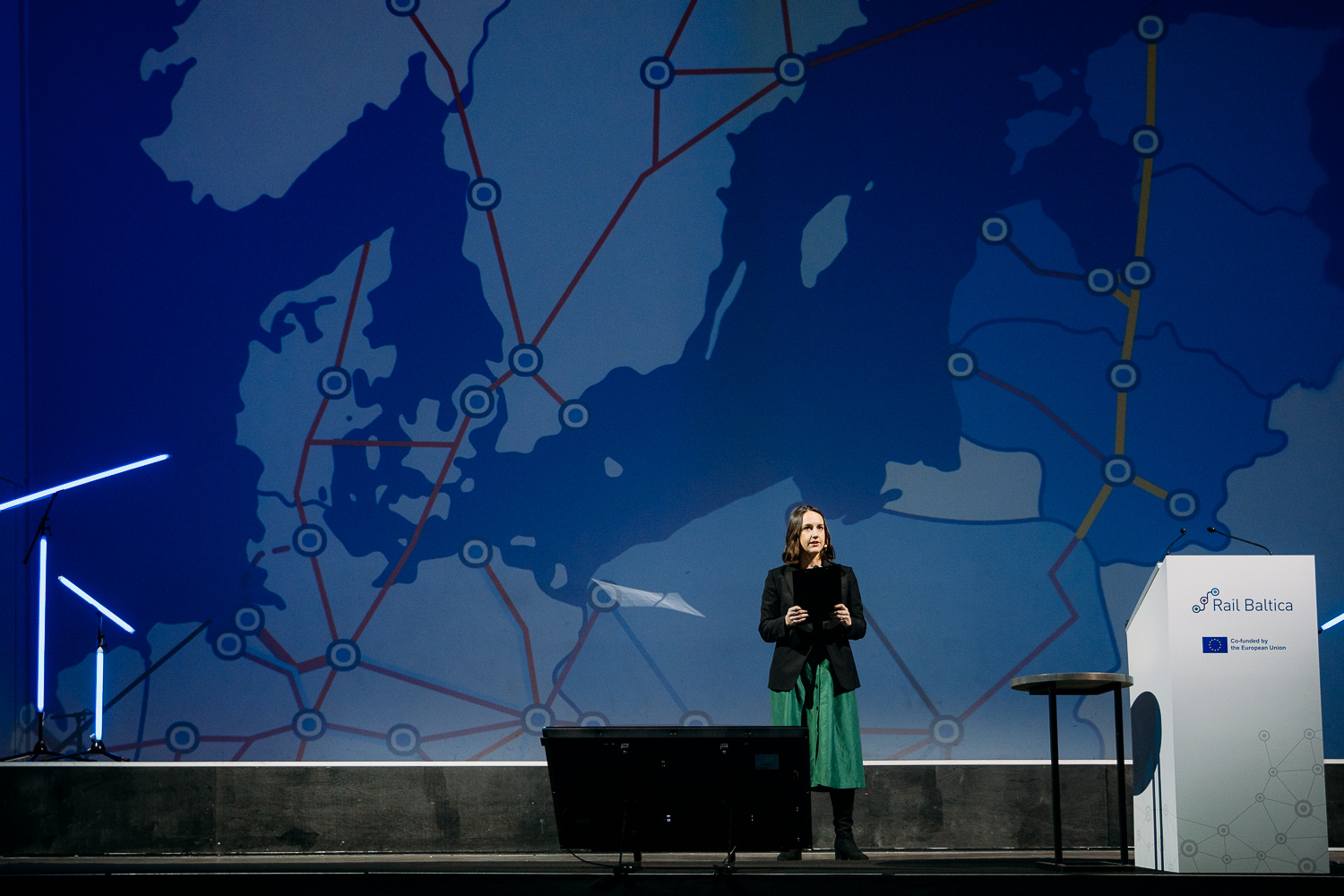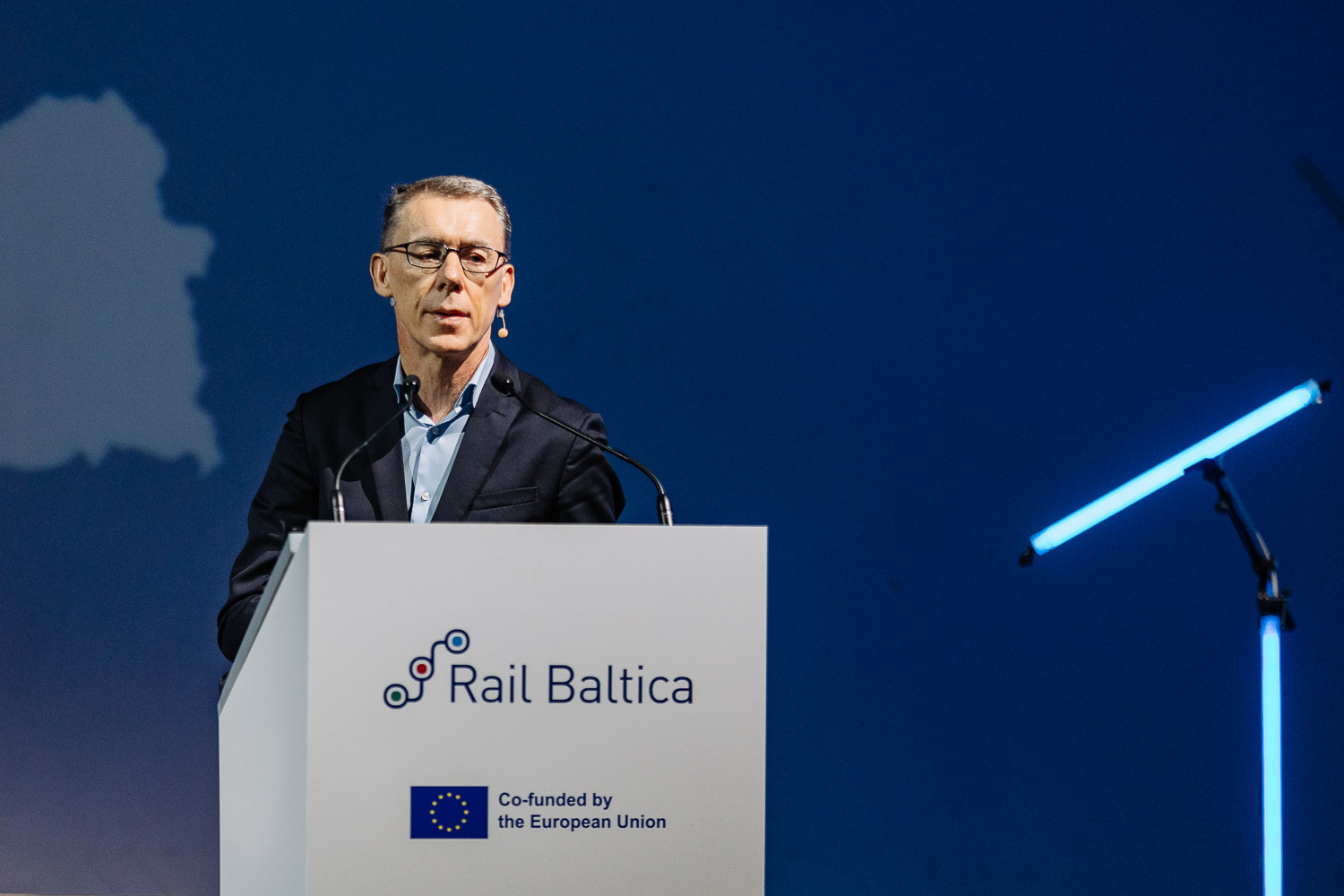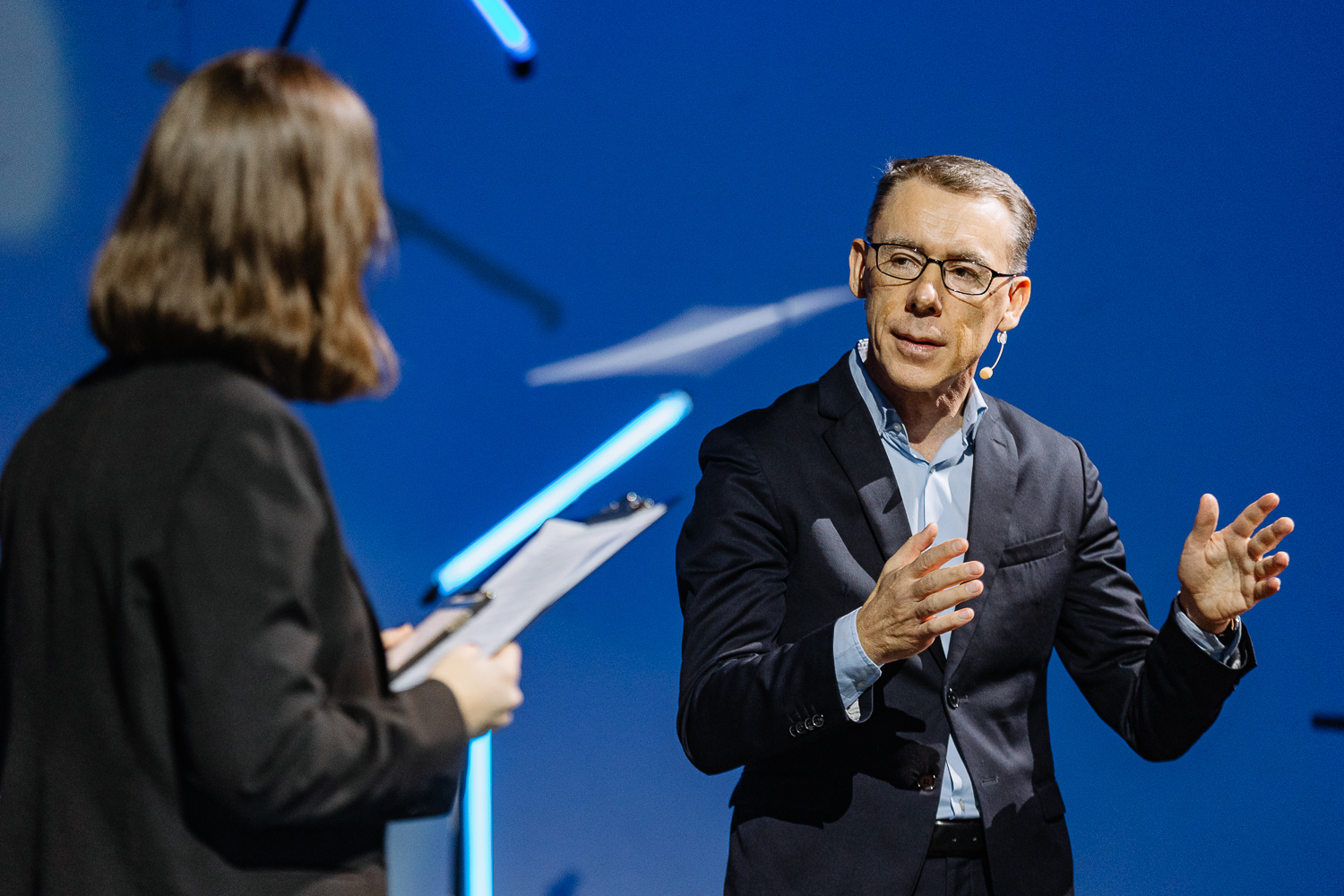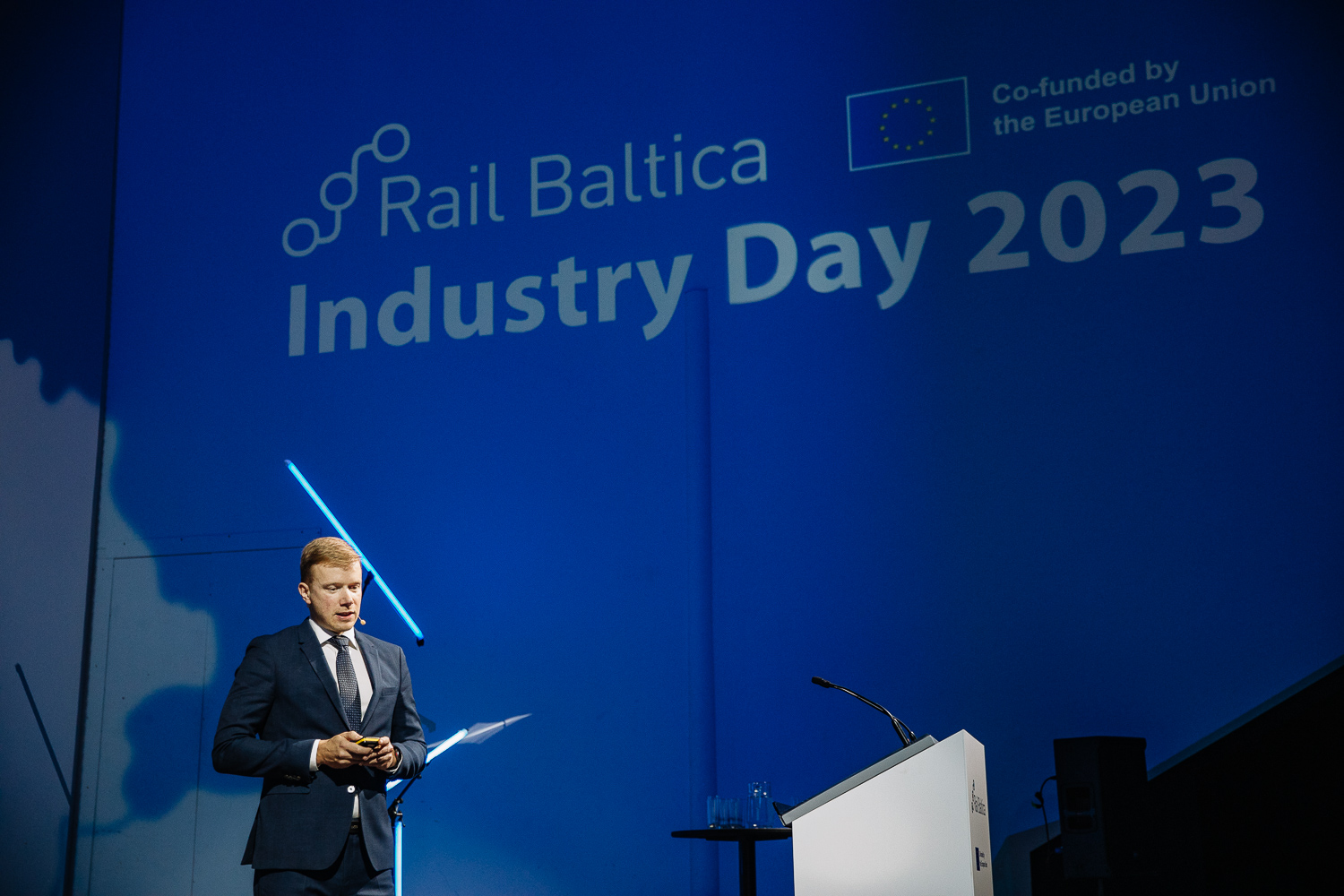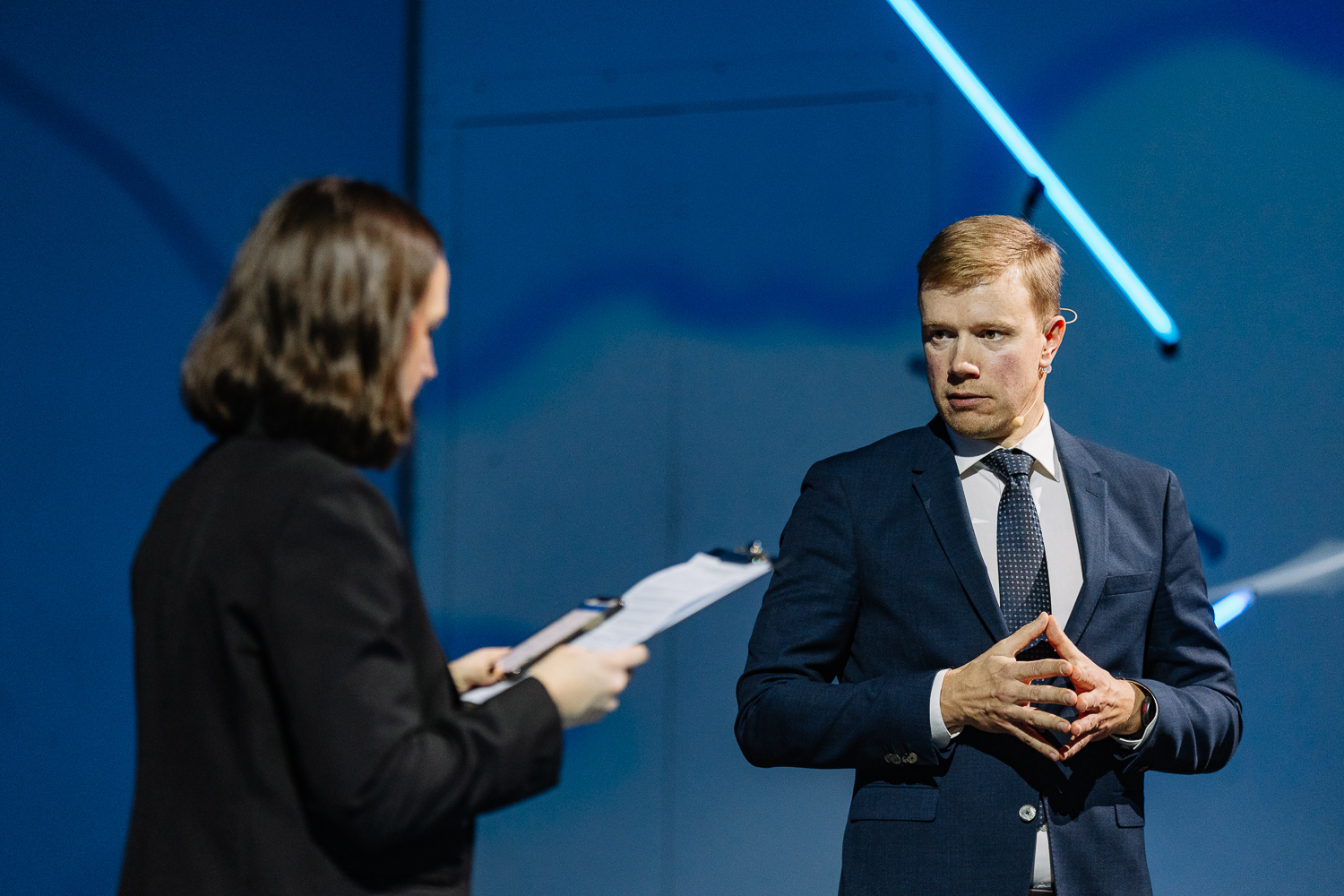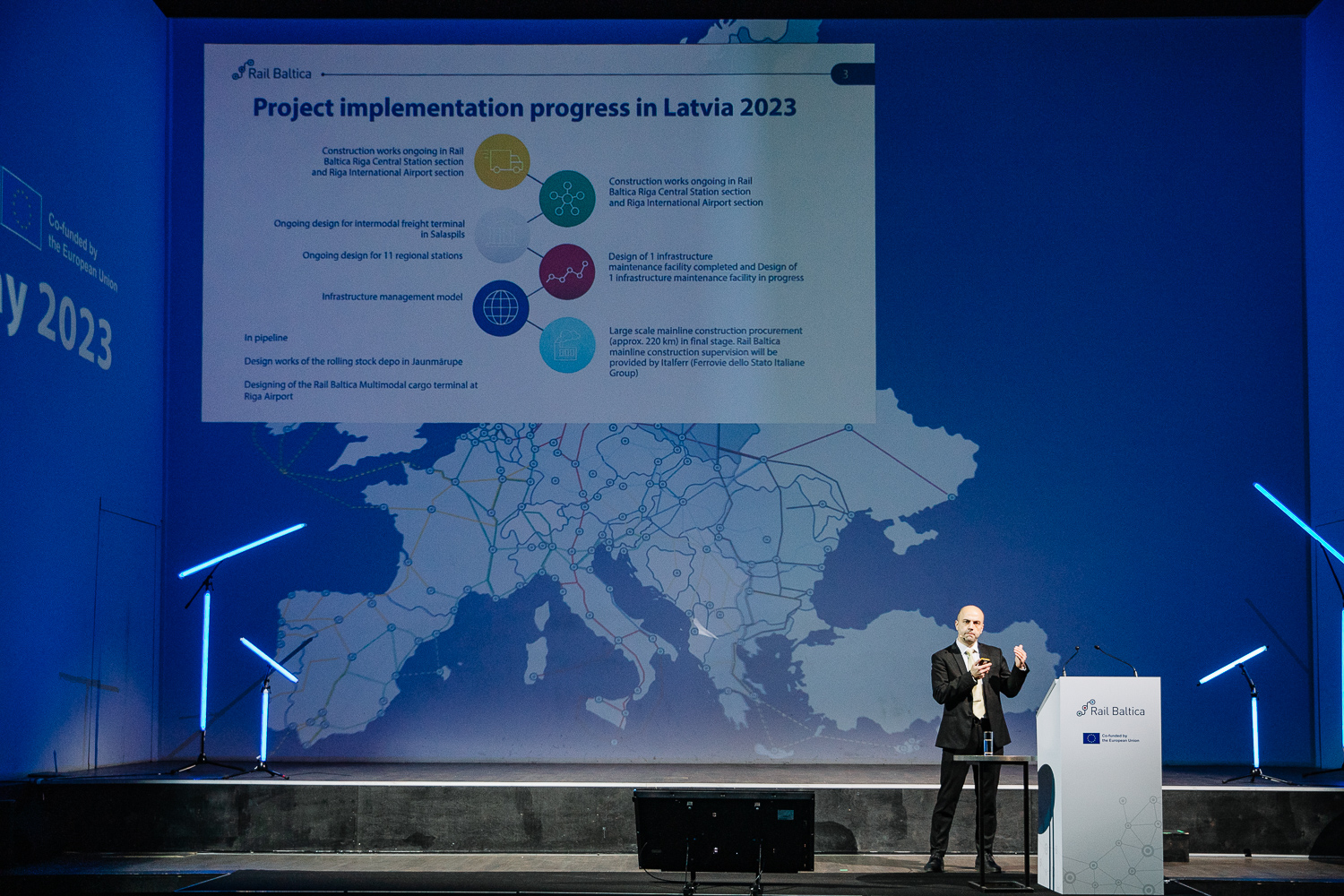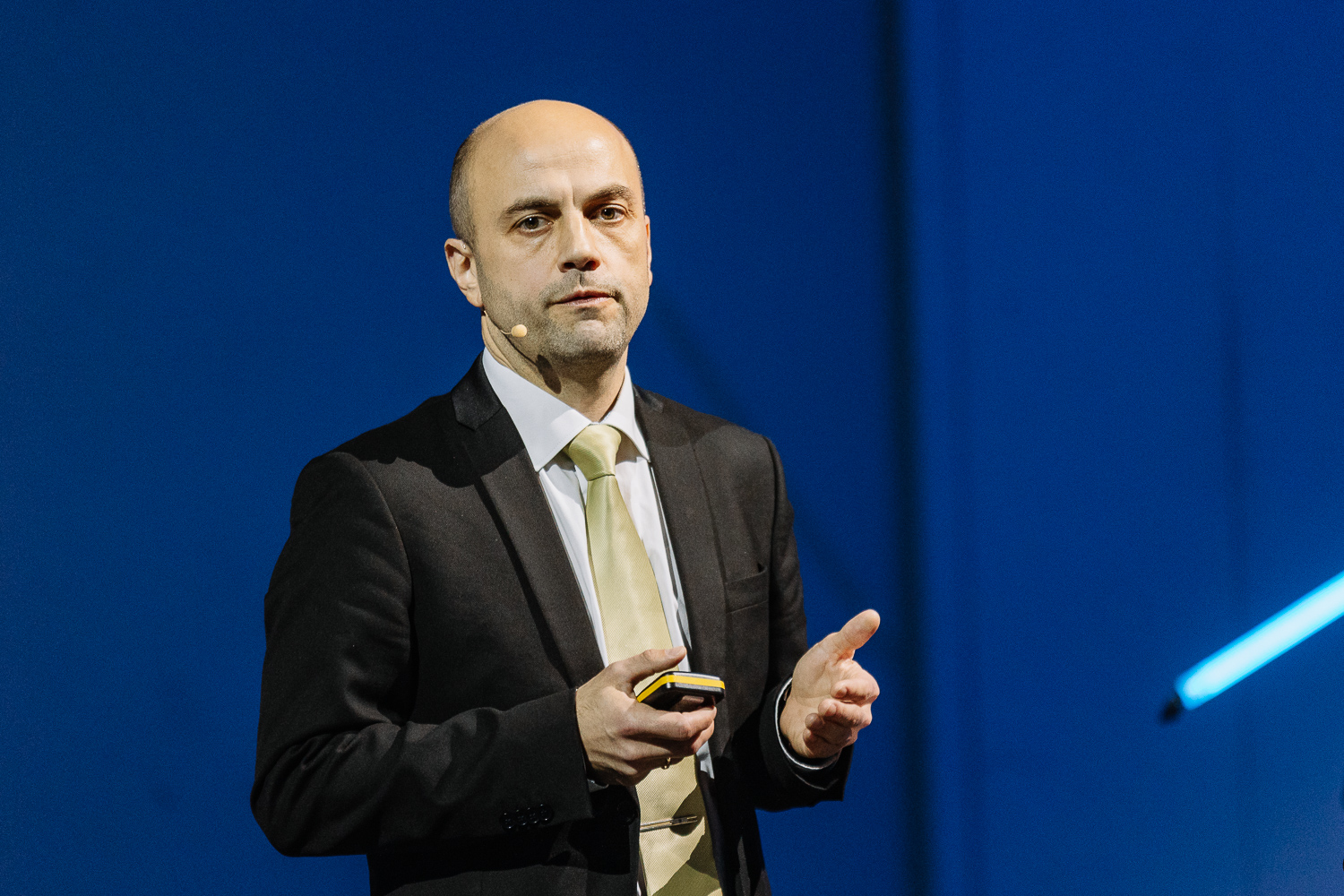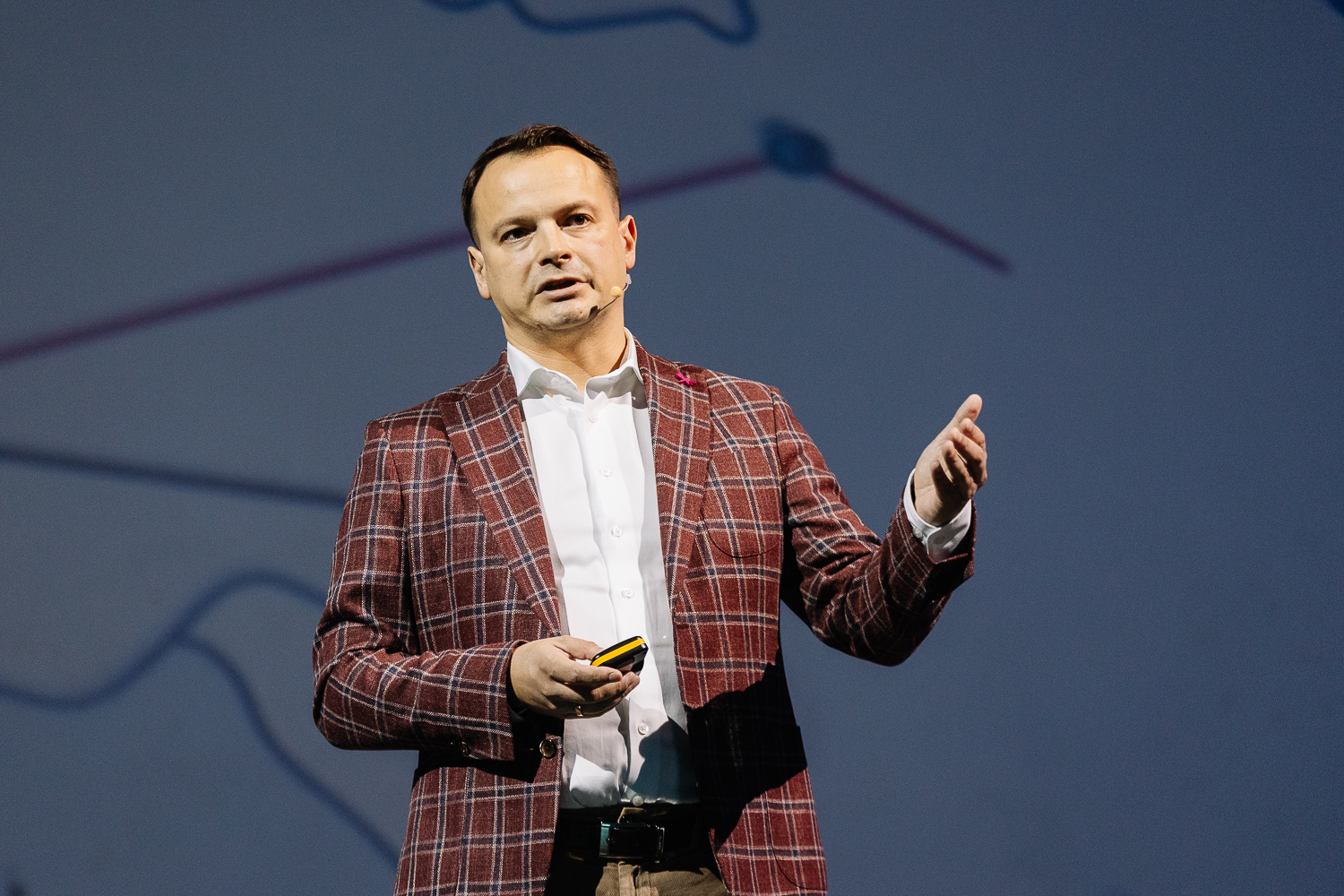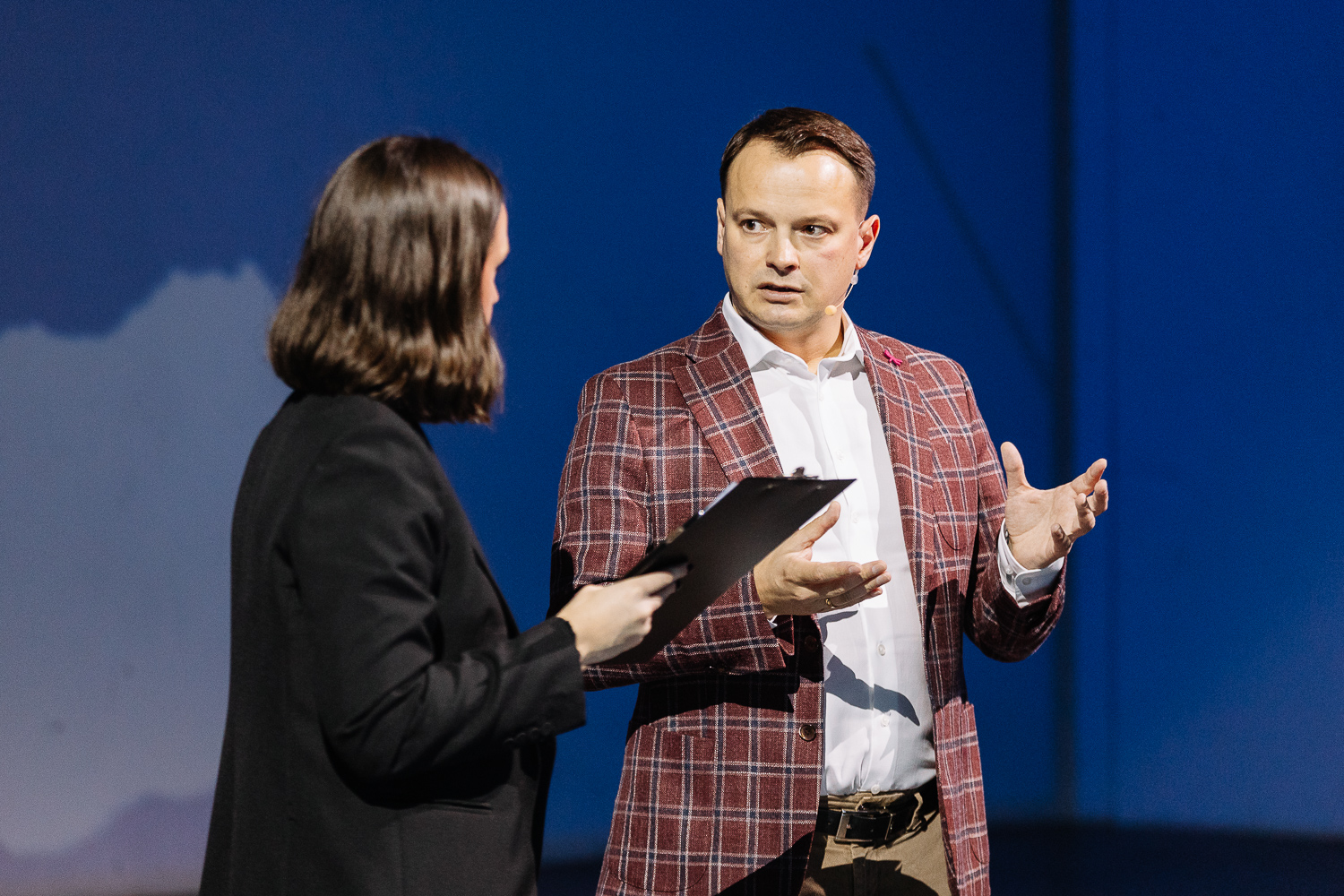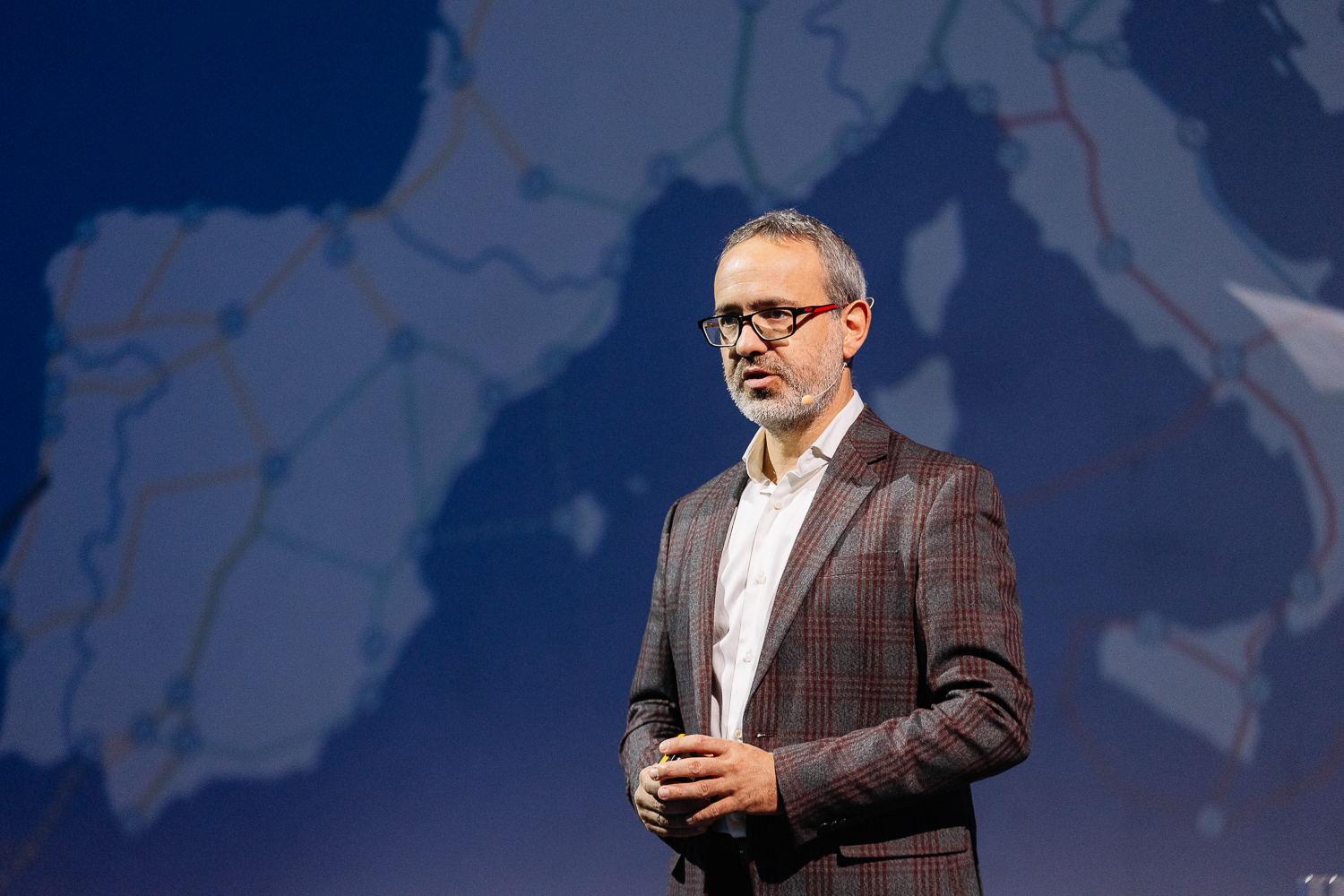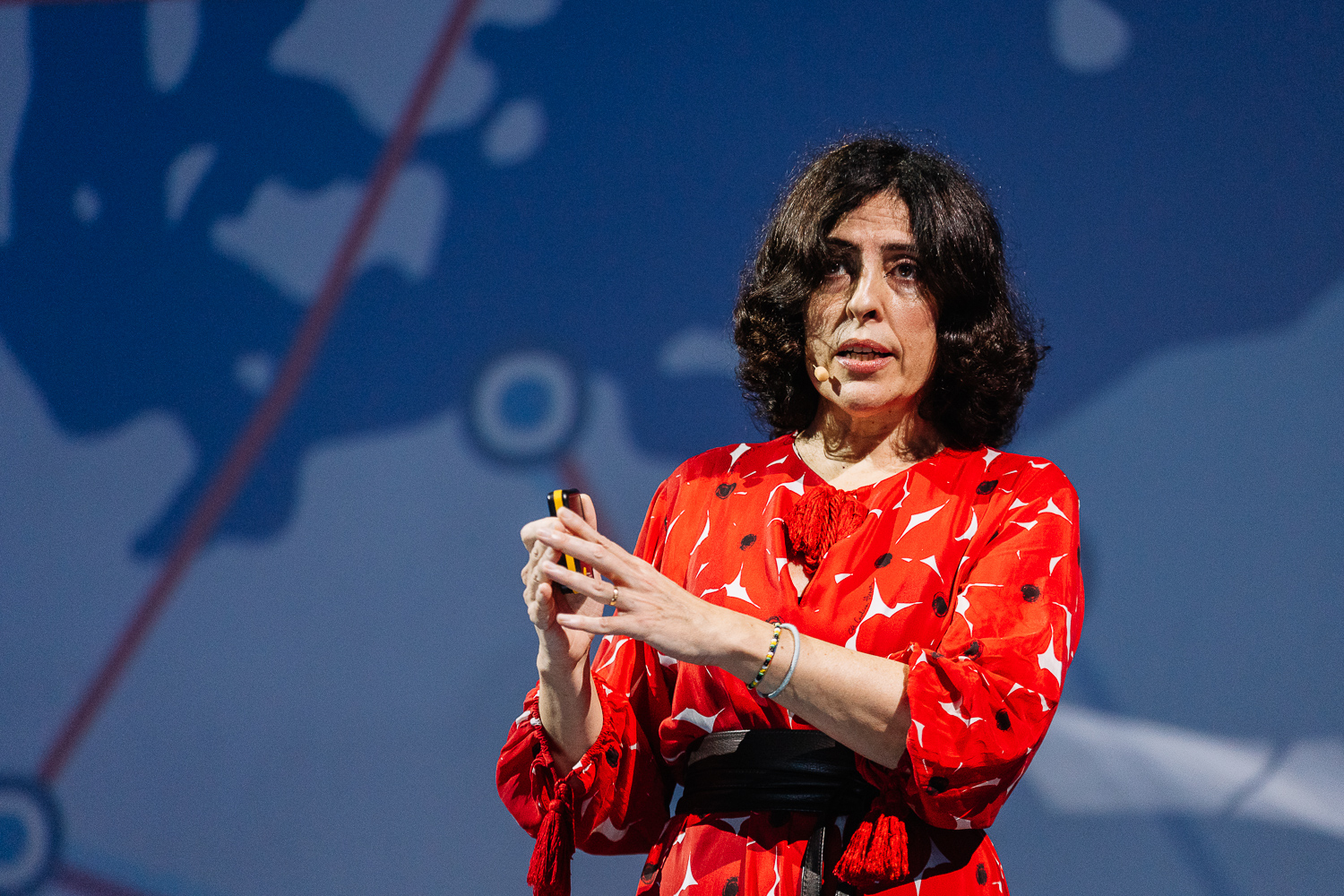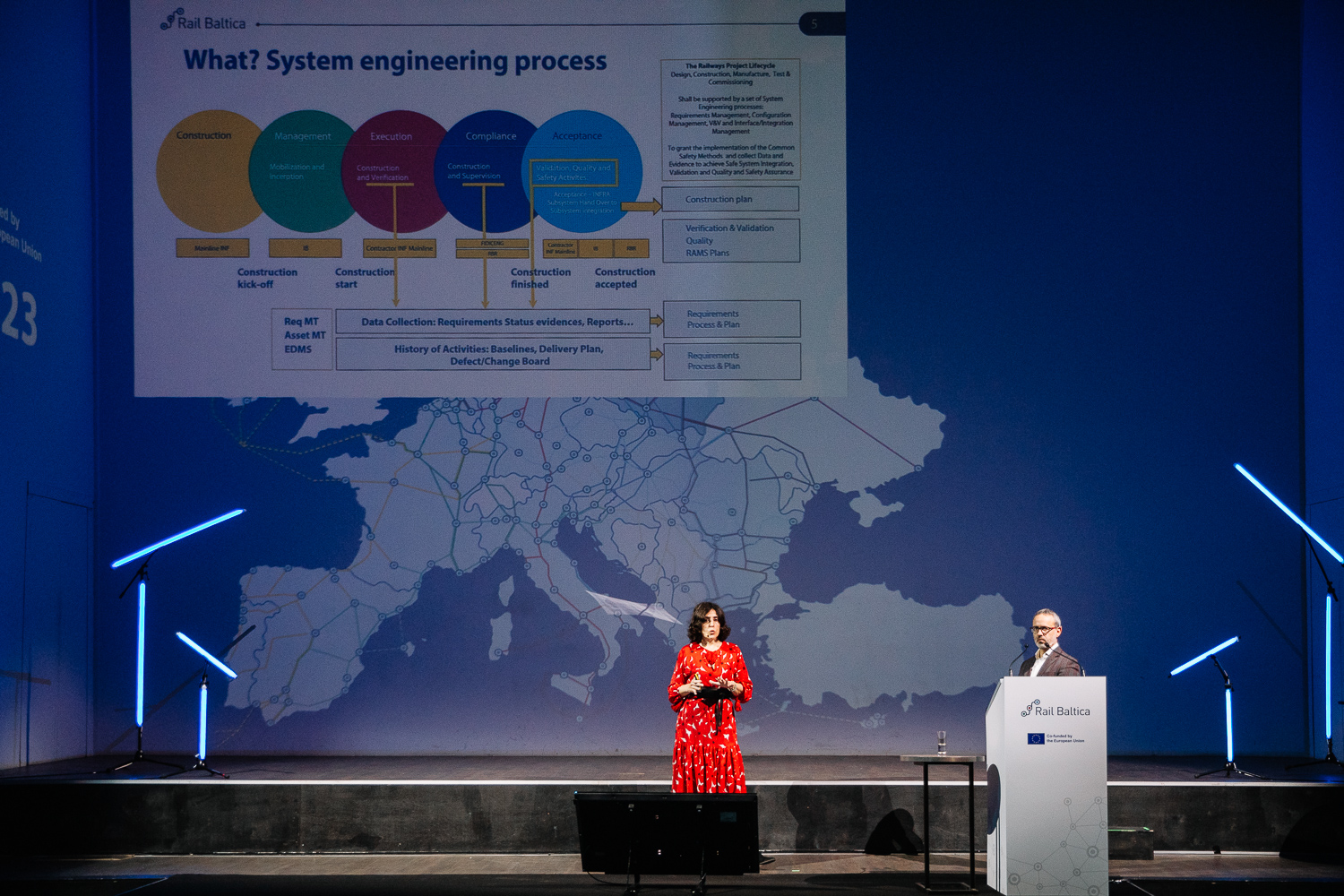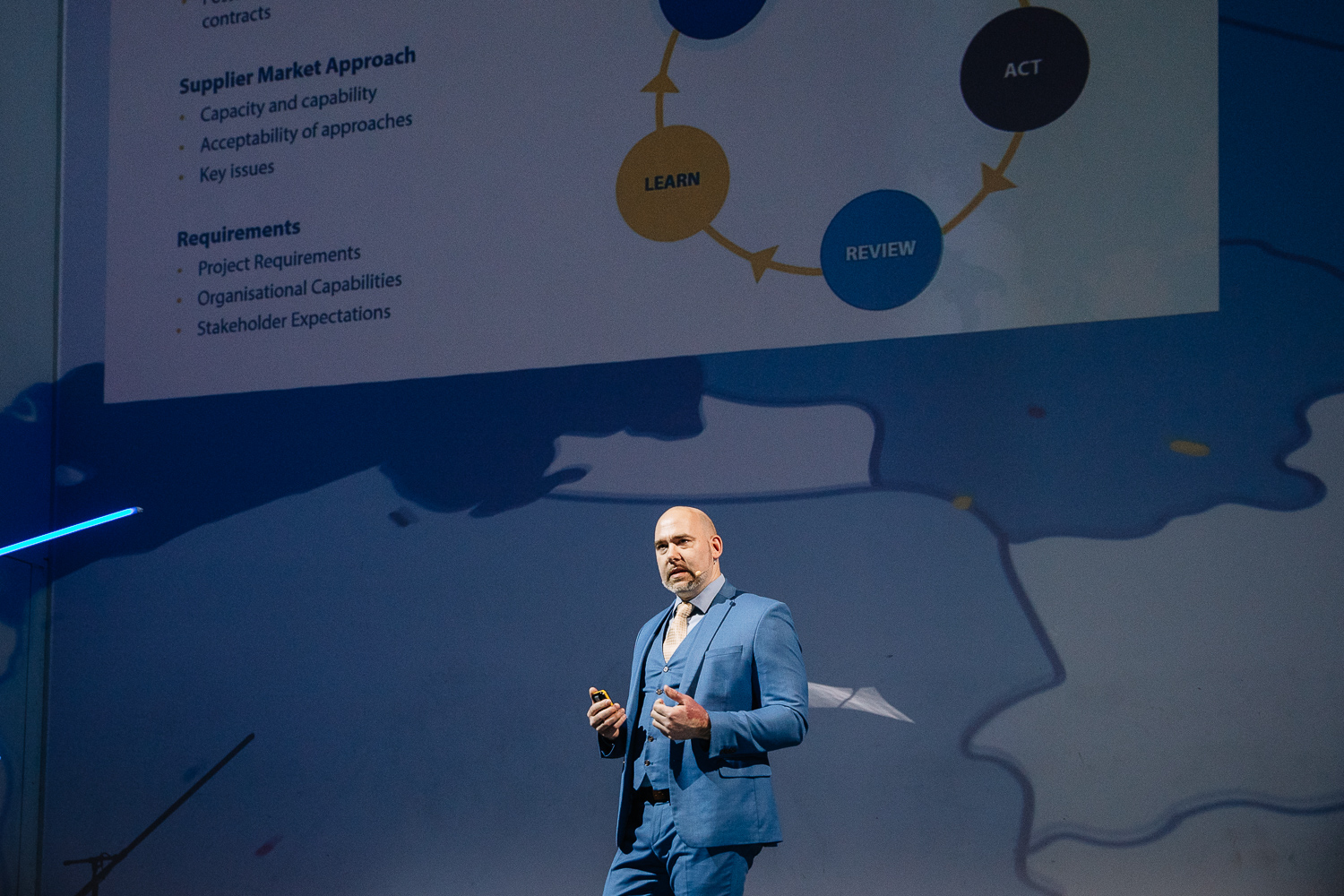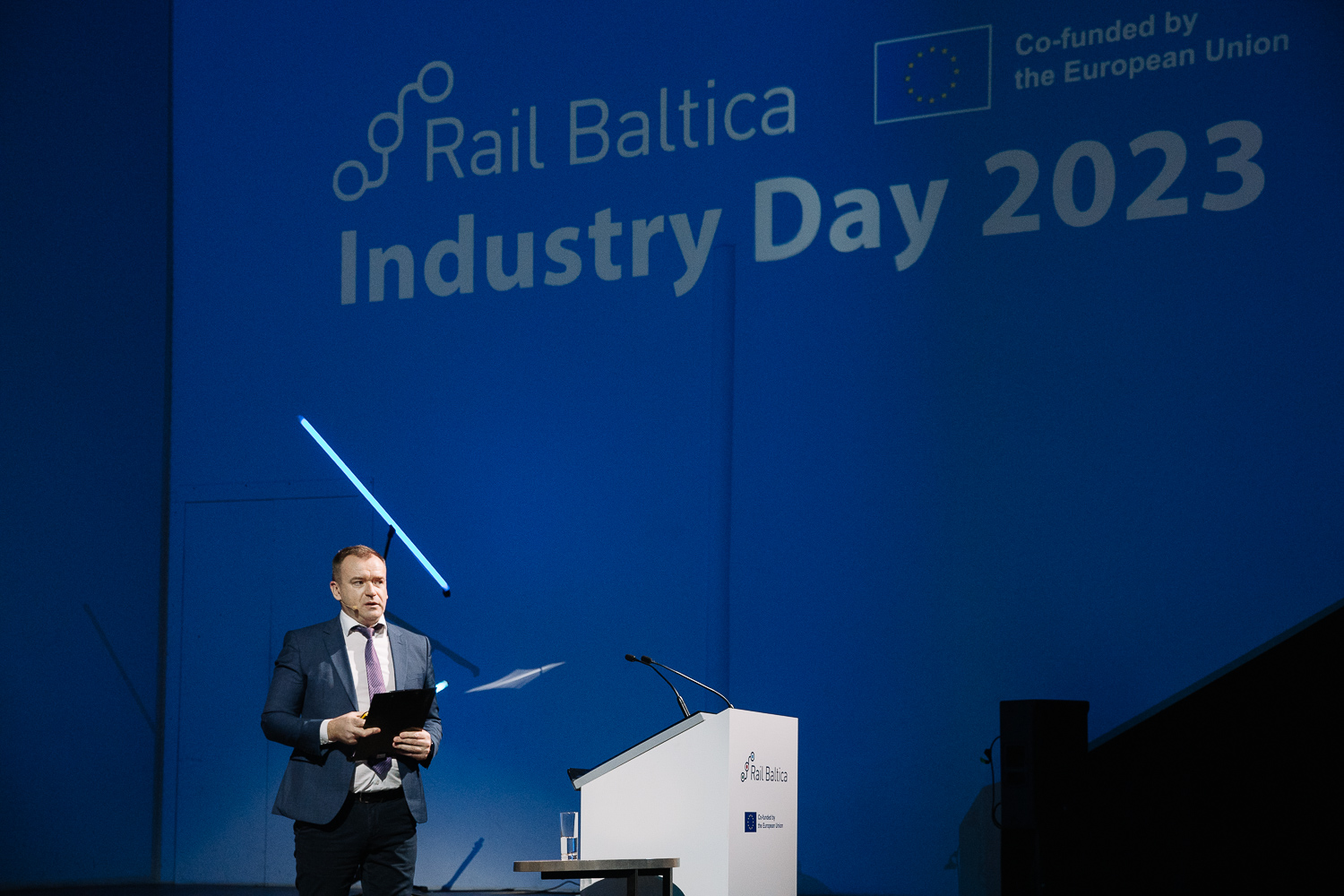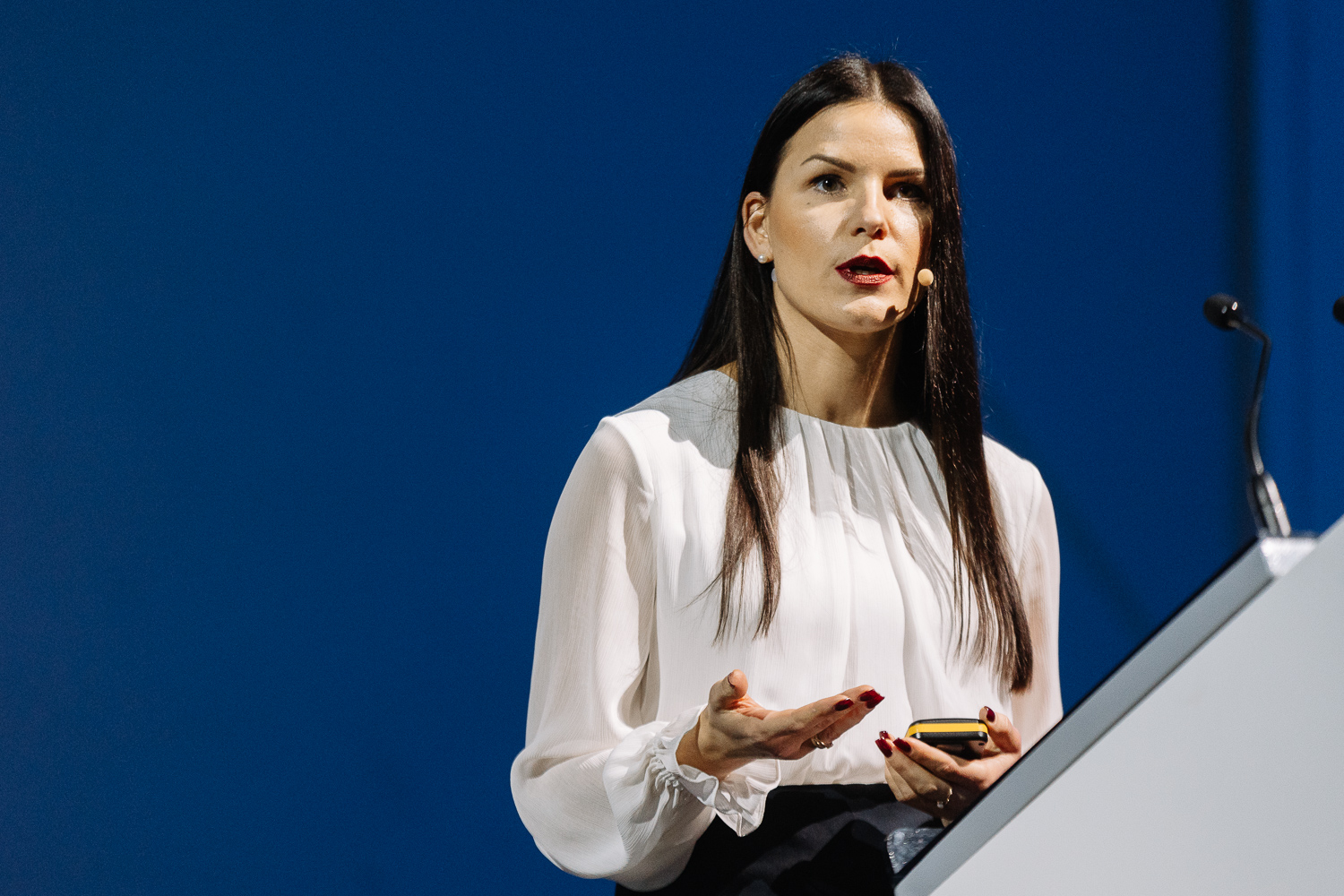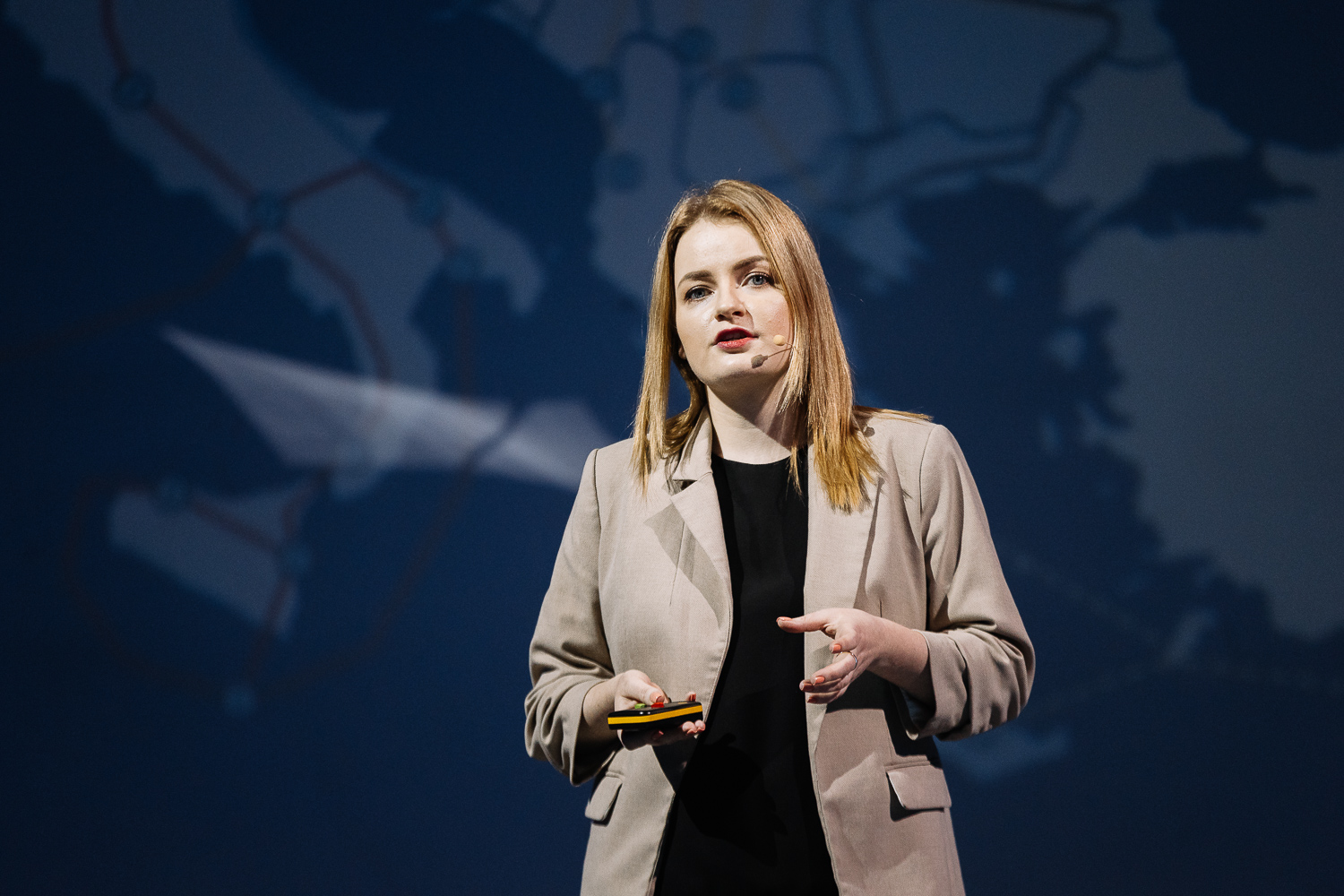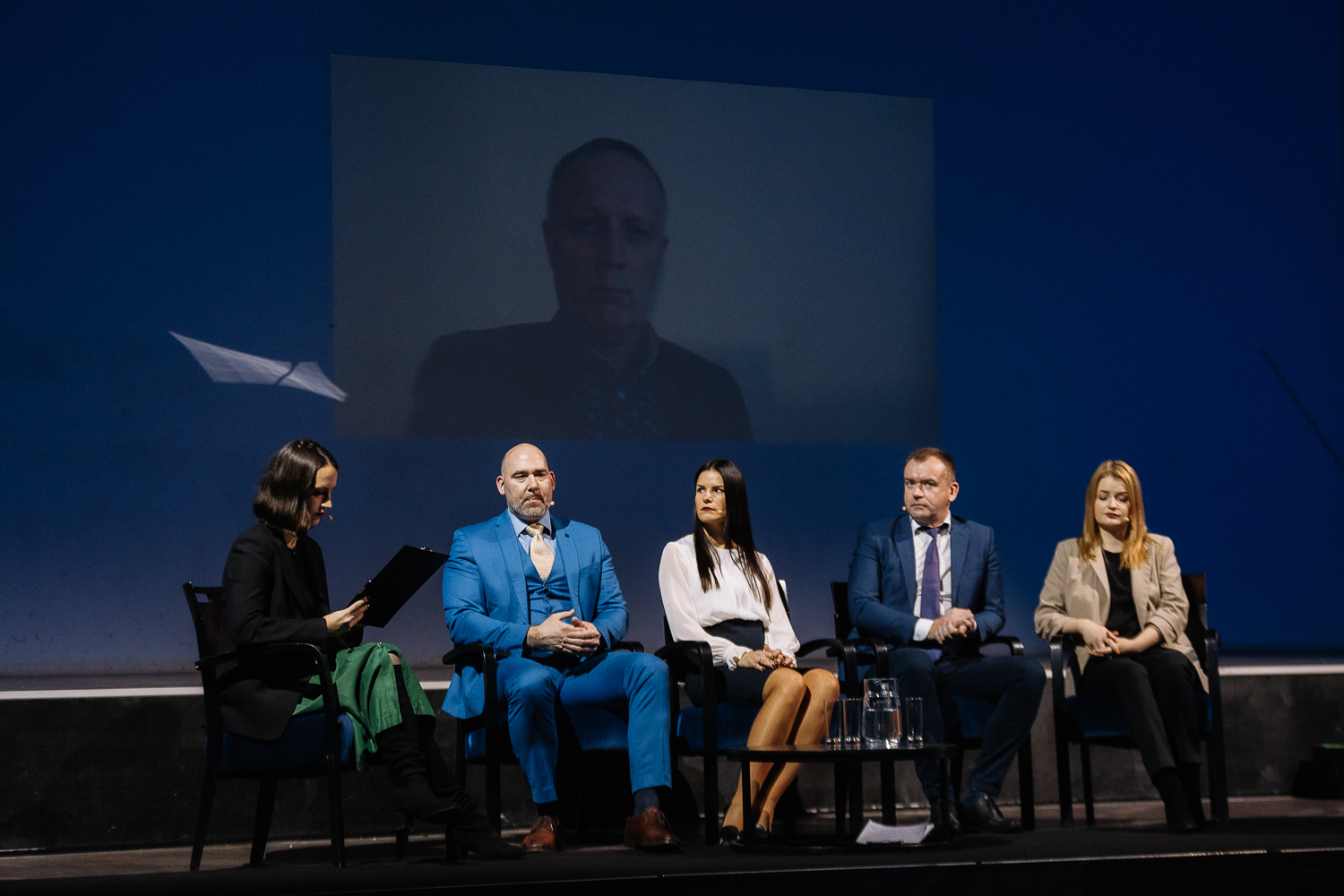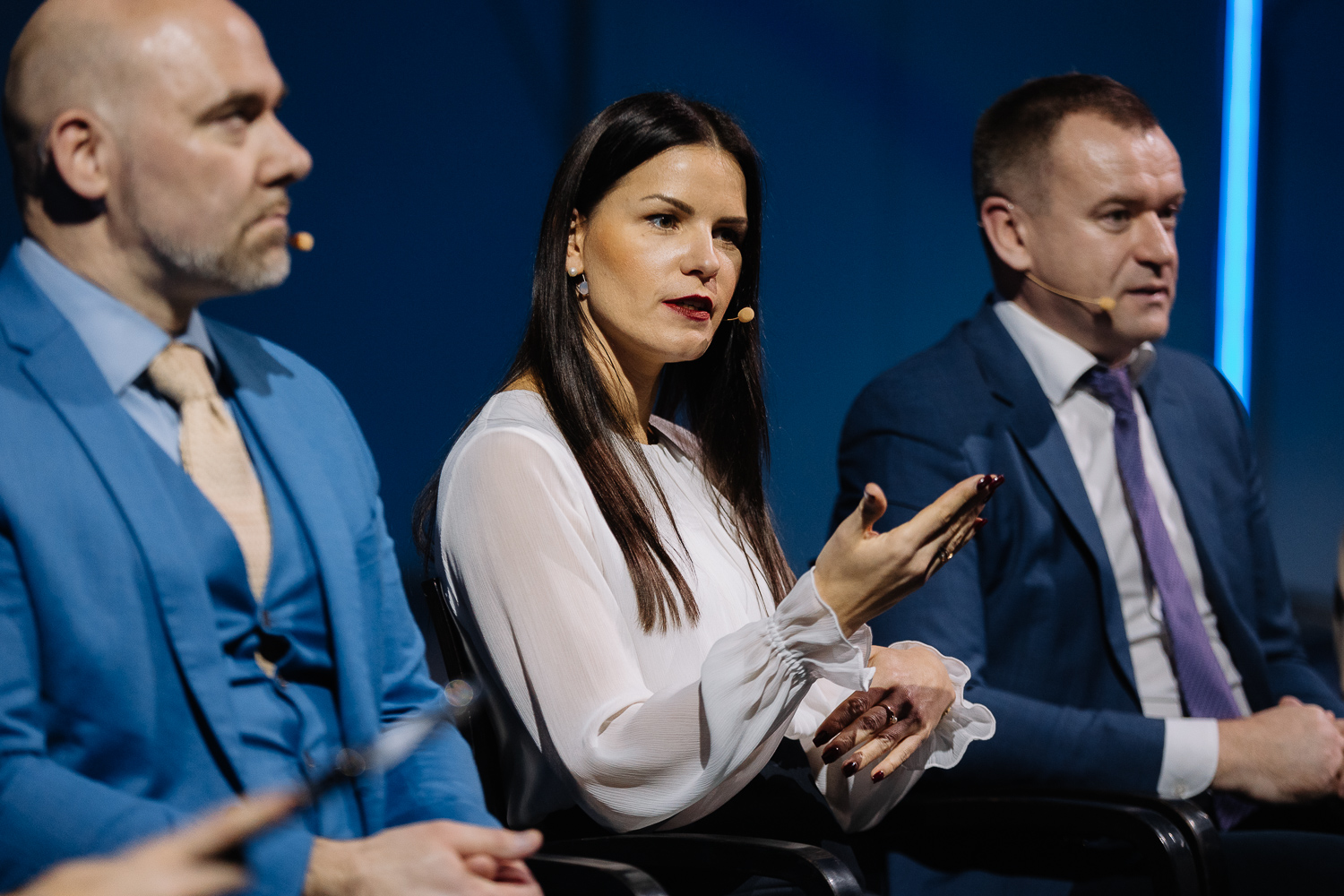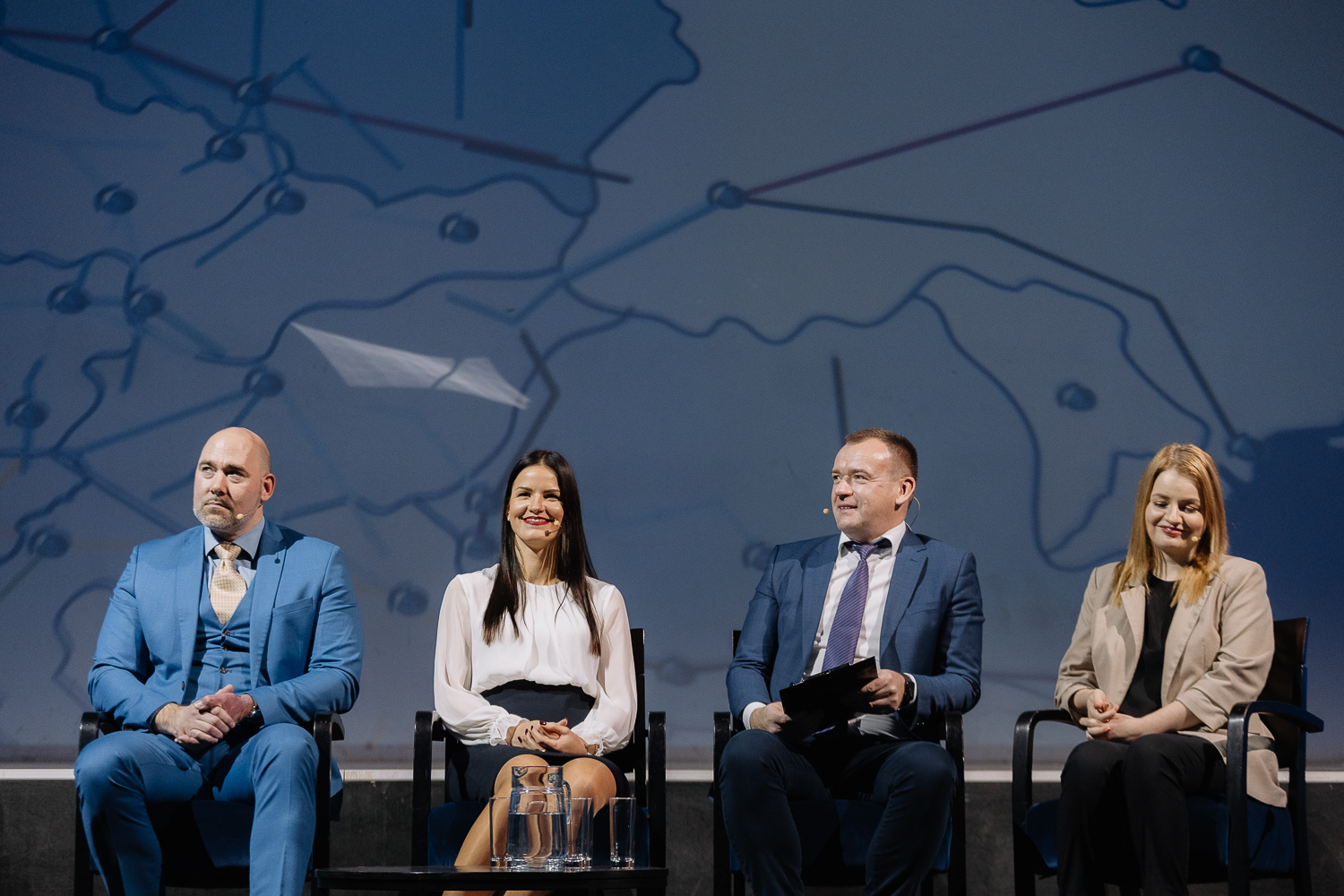The third Rail Baltica Industry Day in 2023 continued its tradition of success, reaffirming the enduring appeal of this format among Rail Baltica partners, suppliers, and the market. Held online on 8 November 2023, the event offered an insightful update on project progress and plans to over 900 registered participants from the EU and beyond. This highlighted the steady support from partners and the market, making this annual gathering a reliable and well-received occasion.
The agenda for the day covered a spectrum of aspects of the Rail Baltica global project. From country-specific insights and procurement strategies to upcoming plans, advancements in railway sub-systems, and construction updates, participants were provided with a comprehensive range of information. Each presentation was followed by a dedicated question and answer segment, facilitating direct interaction between attendees and the project team.
The conference commenced with a warm welcome from Madame Catherine Trautmann, the European Coordinator for the North Sea-Baltic TEN-T Corridor, of which Rail Baltica is a vital component. Her opening address underscored the magnitude and importance of the project, emphasizing the long-term benefits it will bring to the economy, environment, European security, and citizens’ travel within the region.
Madame Trautmann, who in her role has been closely monitoring Rail Baltica for nearly a decade, described it as a crucial moment in the project’s evolution as the construction of the mainline is starting. She also thanked the market for its interest in the project and stressed that, enjoying strong political support at all levels, national and European, “Rail Baltica is a very interesting and safe business opportunity.” Politically, there is resounding support, with the European Union recognizing the necessity of a resilient transport connection from the Baltic states to the rest of the European Union. The citizens and politicians of the Baltic states, she noted, are fully aware of the project’s merits, echoing the sentiment that “Everybody wants Rail Baltica.” The European Commission’s substantial financial backing further underscores the project’s importance, with 2.2 billion euros earmarked for Rail Baltica in the Baltic States, making it the recipient of the highest proportion of funds from the Connecting Europe Facility.
Following the welcome words, high-level representatives from the Baltic States’ ministries responsible for implementing Rail Baltica addressed the audience. Mr Kristen Michal, Minister of Climate of the Republic of Estonia, Mr Kaspars Briškens, Minister of Transport of the Republic of Latvia, and Ms Loreta Maskaliovienė, Deputy Minister of Transport and Communications of the Republic of Lithuania, reiterated their unwavering support for the project.
The subsequent presentations featured key figures in the Rail Baltica delivery organizations, including Mr Thierry Boussillon, Chief Programme Management Officer at RB Rail AS, the central coordinator of the project. Boussillon emphasized that Rail Baltica’s primary goal is to become an integral part of the EU transport network by 2030. “Our vision,” Boussillon affirmed, “remains unchanged – this project will support the achievement of climate, sustainability, and safety goals. It is a clear catalyst for further development opportunities in this region and will improve the mobility of goods and passengers.”
The final segment of the Rail Baltica Industry Day 2023 focused on the project’s strategic interaction with the market and on procurement plans, as well as essential aspects of the procurement process. Notably, the session addressed recent changes in public procurement legislation, highlighting the project’s commitment to transparently navigating evolving legal frameworks. Emphasis was placed on the pre-tender stage, stressing the importance of market consultations and effective supplier communication for a streamlined procurement process. Additionally, the conference offered insights into the project’s procurement landscape in 2023 and anticipated developments for 2024.
Rail Baltica Industry Day 2023 photo album
For those who missed Rail Baltica Industry Day 2023, you can catch up by watching the event on the Global Project’s YouTube channel.
If you have any questions related to Industry Day 2023, please feel free to reach out to [email protected].
Q&A
Given the high level of interest and time constraints during the live event, Rail Baltica experts have subsequently addressed unanswered queries, and their responses are provided below.
Lithuania
Why is the construction of the Neris bridge going so slowly, construction started a year ago, but very little has been done so far?
The bridge over the Neris is one of the most complex objects of the Rail Baltica project and an extremely complex engineering structure. Currently, piles are being installed at the bridge construction site. It is planned that the installation of the piles will be completed in the spring of 2024. Later, the stage of installation of the main structure of the bridge will begin. Preparatory work – preparation of the construction site, demining work, installation of the construction base and local roads necessary for access to the bridge columns took place since 2022 September. The main construction works, which were intensively prepared due to the complexity of the project, started a few months later, after detailed design was prepared. However, together with the contractors, LTG Infra, the Lithuanian Implementing Body, is constantly looking for solutions to speed up the construction work. The bridge construction is anticipated to be finalized by the end of 2025.
How will Kaunas station change due to Rail Baltica? Will there be a new bridge over the river in Kaunas?
The development of the Kaunas node is planned in accordance with the Design guidelines of Rail Baltica. The general requirements is 1435 mm gauge double track designed for 249 km/h passenger trains speed. Taking into account the surrounding densely urbanized, cultural heritage and protected territories, it is planned to increase the radiuses of the railway curves during the development of the Kaunas node by reconstruction of the existing 1520 mm and 1435 mm gauge railway tracks. Also, for the convenience of passengers, the 1435 mm gauge tracks of Kaunas station and their platforms will be constructed closer to the Kaunas station building. To increase the capacity of Kaunas station, train speed and traffic safety, a new bridge over the river Nemunas will be constructed as well.
Estonia
Has the geotechnical survey on the Pärnu-Latvia border section started?
Most of the geotechnical investigations are already completed both for the structures and the track alignment on the Design section of Pärnu-Latvia border in Estonia.
Latvia
What was the main reason, why the entire mainline construction in Latvia was merged into a single tender?
The construction strategy in Latvia aims to attract experienced international construction companies for efficient railway infrastructure development, promoting knowledge transfer and fostering future partnerships between local subcontractors and global entities. This approach accelerates Rail Baltica construction, enhances Latvia’s competitiveness, and leverages economies of scale. The procurement process aligns with the chosen construction strategy in Latvia, targeting leading global companies in high-speed railway construction, ensuring competence, international competition, and mitigating risks. This comprehensive approach benefits the project in both terms and costs.
Procurement
When procurement plan for 2024 will be available?
The implementors of the Rail Baltica project – RB Rail AS, Rail Baltic Estonia, Eiropas Dzelzceļa līnijas and LTG Infra, are cooperating to provide a common procurement list at the beginning of 2024. When this is ready, it will be communicated on the Rail Baltica website and via the procurement newsletter.The upcoming procurements will include construction procurements in Lithuania and Estonia, some infrastructure engineering tenders, as well as a few studies. This will be published on the Rail Baltica website at the beginning of 2024.
What exact procurements will be announced in the nearest future?
The upcoming procurements will include construction procurements in Lithuania and Estonia, some infrastructure engineering tenders, as well as a few studies. This will be published on the Rail Baltica website at the beginning of 2024.
BIM/GIS
Will at least some basic level of GIS information (route and station locations, structures) be provided publicly in some exchangeable format (at least KML)?
Due to ongoing design works, the information on the Rail Baltica public map is subject to change. For this reason, there is currently no option to extract data in exchangeable formats. Once the design work is complete and the essential information is no longer subject to change, then we will provide the option to get the data in standard exchangeable GIS data formats.
System Engineering
The existence of a Requirements Management SW tool was mentioned, so how will the suppliers get access to the tool and interact with it?Suppliers will get access by means of licenses with the Requirements tool. RB Rail will be the user’s administrator. RB Rail will provide a Delivery Platform approach centralizing all systems needed for a delivery (EDMS, Requirements Management system, and any other if necessary). RB Rail will also grant training to users about how to use the Requirements Tool for implementing/delivering works in the Rail Baltica Global Project.
Other
Why in ENE Tender advanced payment isn’t in a market manner (% from the contract value in total), to let the Contractor start the project?
Contract is based on Working orders and each phase and working order trigger advance payment for particular scope of Works and preparation of next phases will be done step by step.
Have the telecoms stations systems been designed yet as part of the station or is this a separate area?
Telecoms station systems are a part of CCS procurement, which is currently ongoing. You can read more on the ongoing procurement here.
An overview of the CCS package: 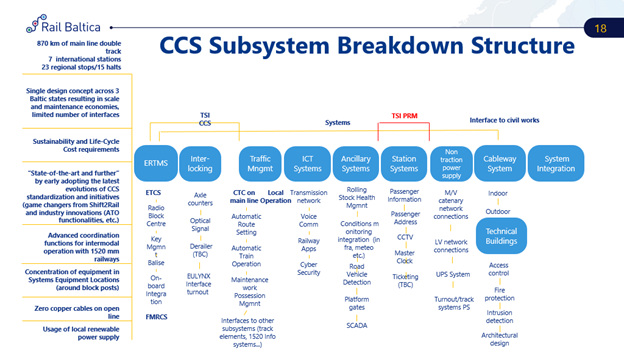
Are there also EU funding options for existing, Baltic (e.g., maintenance facilities) to support to transform into modern European technology?
CEF Transport financing instrument regulation is created to develop TEN-T network in all EU member states using European gauge 1435mm network. Therefore, EU is financing new maintenance facilities that should maintain only the EU rail network.
To mitigate the interface during implementation between contract scopes, is there flexibility mechanism allowing transfer of scope between Contractors?
Possible contract variations need to be managed in conjunction with the contract clauses of each contract and the applicable procurement law. In case there is a proven necessity for change between contracts, the client should address each respective contract with the allowable changes accordingly.
Regarding land acquisition – what impact did it have on programme when you decided to use purchase of land based on commercial basis acquisition?
In Lithuania, the scope of the Rail Baltica project is very large. Therefore, in some cases Rail Baltica team uses a project implementation strategy, when specific infrastructure objects (viaducts, bridges, tunnels) are built first, and the whole railway line is built later. This not only allows to speed up the project implementation but is also useful for both market participants and people living near the future railway. The latter have the opportunity to start using the newly built infrastructure earlier. Meanwhile, dividing the project into smaller volumes will lead to a larger amount of purchases. Thus, more market participants will be able to participate in procurement by submitting proposals for design and contracting services.
The process of land acquisition in Lithuania is going on smoothly and quickly, so the Rail Baltica project team can already see that the strategy chosen for the project implementation are proving to be successful. Tenders are already announced for the design of specific infrastructure facilities at Kaunas railway node. Thus, design work on viaducts and tunnels on this section will start early next year. It is expected that preparations for construction works will be completed in early 2025.
In Latvia, land acquisition process is based on the legal framework that strictly regulates the acquisition of land for public needs in Latvia.
Are there estimates of how much it will cost to maintain the infrastructure?
During the design phase many of chosen solutions are based on life cycle cost assessment thus looking for the options that would ensure sustainable infrastructure and likely reduce OPEX in the future. Before all designs are finalized, it is too early to calculate the total maintenance cost of the infrastructure.

